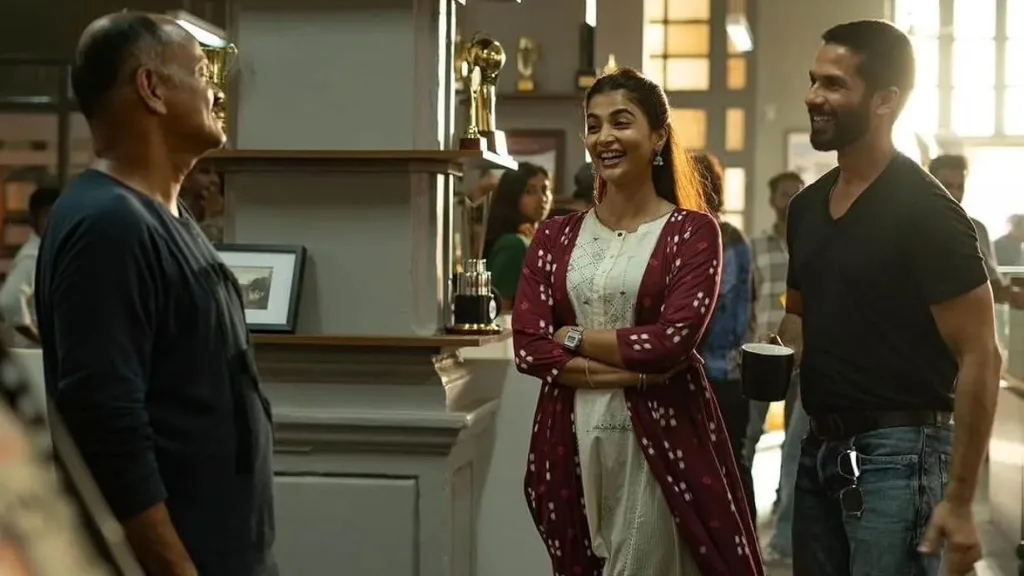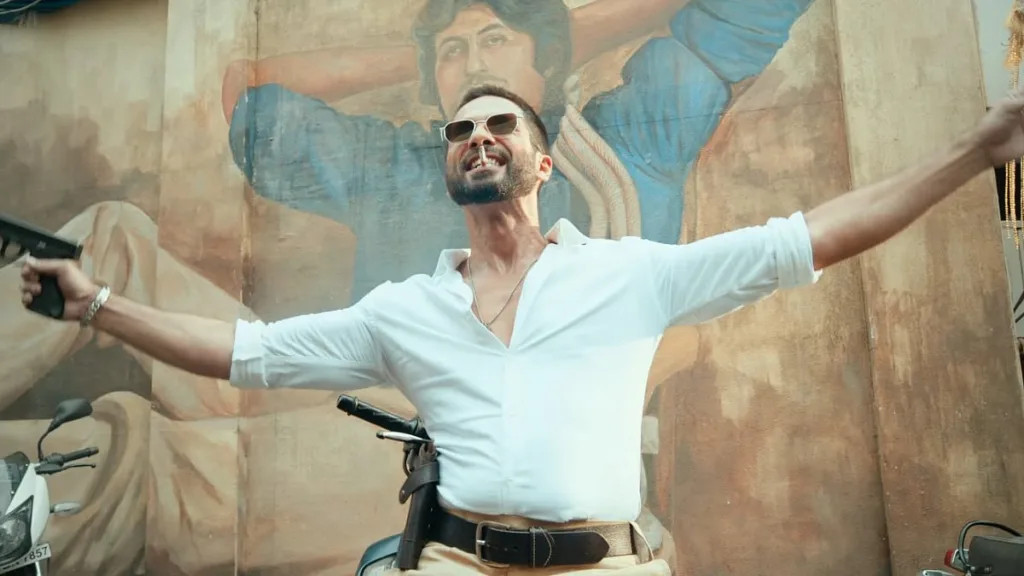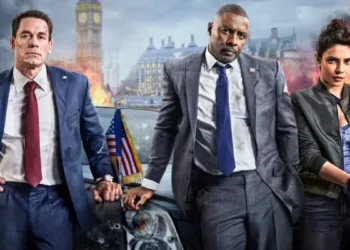ACP Dev Ambre headlines this modern police thriller, a film that examines a law enforcer’s struggle with memory loss following a major accident. The story begins with Dev confidently asserting that he has cracked a significant murder case, only for fate to intervene with an incident that erases his recollections.
This narrative reinterprets an earlier storyline, presenting a layered account where a capable officer must reconstruct both his past and the details of the case he once solved. The structure invites comparisons with other police dramas that experiment with themes of memory and identity, offering an account that is as challenging as it is engaging.
The film operates within a framework that mixes intense action with thoughtful, quieter moments. Its approach in handling fast-paced sequences contrasts sharply with segments where the character’s internal conflicts come to the forefront. Before the accident, Dev exhibits an aggressive, uncompromising side, while his later portrayal reveals a more reflective and conflicted personality.
This duality in character portrayal finds echoes in similar works in the genre, where the unraveling of one’s identity plays a central role. The narrative setup ensures that viewers experience both high-tension action and a more measured exploration of personal and professional dilemmas.
From Bold Claims to Forgotten Clues: The Narrative Structure of Deva
ACP Dev Ambre opens the film with a bold claim of having resolved a major murder case. His certainty is shattered when a severe accident wipes his memory, triggering a chain of events that forces him to reconstruct both his personal past and the details of the investigation he once led. The storyline divides into two segments. Initially, the film presents Dev as a confident, assertive officer with a strong sense of duty. Once the accident occurs, the narrative shifts focus, turning to his struggle to reassemble lost fragments of his identity and the mystery behind the case.
The investigation unfolds through a series of methodical steps that reveal hidden aspects of Dev’s character. Each new discovery during the inquiry is layered with hints of past conflicts and uncertainties, which serve to expose the complexity beneath his earlier bravado. The twist at the end of the film rests on the slow and deliberate process by which Dev pieces together his own history. This narrative device is reminiscent of other police dramas where the process of rediscovery is pivotal, although here it is executed with a distinctive attention to detail.
Attention is given to the pacing, which starts with a careful setup that introduces the setting and establishes character backgrounds. The first portion of the film invests time in building a realistic environment that mirrors the intricate nature of law enforcement and the city itself. Following the accident, there is a noticeable change. The rhythm shifts from dynamic action scenes to segments filled with reflective moments and intense internal debates. This change works to sustain tension, keeping viewers alert as the investigation and character development progress.
The screenplay makes deliberate choices in its dialogue, using key exchanges to hint at deeper personal issues and institutional flaws. Lines delivered by Dev and his colleagues reveal unspoken struggles related to past traumas and the heavy burden of duty. The narrative incorporates themes of systemic failure, social inequality, and individual turmoil in a way that adds depth to the case at hand.
Creative decisions made to emphasize the star quality of the lead character sometimes produce scenes where the emphasis on personality seems to overshadow more grounded elements of the investigation. This choice can be compared to other films in the genre that prioritize star power while attempting to maintain a balance between action and character study.
Dual Identities and Interactions: Analyzing Characters in Deva
ACP Dev Ambre is portrayed with a striking contrast between two distinct periods in his life. Before the accident, he displays a forceful, self-assured approach, marked by assertiveness and a readiness to take decisive, sometimes ruthless actions. After the accident, his demeanor softens into a more reflective and uncertain state.
His struggle to recover memories is interlaced with hints of a troubled past—unresolved issues with family and lingering personal demons. This shift in behavior not only adds complexity to his role but also forms the central emotional thread that binds the narrative. Comparisons can be drawn with other police dramas where the lead character faces internal conflicts that are revealed gradually through their actions and quiet moments of vulnerability.
The film also gives room for supporting characters who contribute both solidarity and contrast to Dev’s journey. Colleagues such as Farhan and Rohan appear as dependable figures who provide both encouragement and a counterbalance to his impulsiveness. Diya, the journalist, though appearing briefly, offers a critical external perspective on the conduct of law enforcement, hinting at broader societal issues.
Some minor characters, despite limited screen time, add subtle dimensions to the storyline by mirroring aspects of the main character’s internal battles or by highlighting systemic shortcomings within the department.
Shahid Kapoor’s performance as Dev Ambre is marked by a precise control over the contrasting facets of the character. He convincingly delivers the intensity required in moments of high action while also capturing the hesitancy and self-reflection in quieter scenes.
Specific sequences, where Dev’s earlier boldness gives way to a more introspective demeanor, demonstrate Kapoor’s ability to balance emotional strength with vulnerability. The supporting cast contributes solidly, with moments that bring an authentic quality to interactions, reinforcing the film’s thematic exploration of identity and duty.
Behind the Lens and Set: Crafting Deva’s Gritty Urban Aesthetic
Director Rosshan Andrrews reinterprets a complex narrative with a focus that centers around the lead character while keeping the established themes intact. His choices in pacing and tone show a clear plan to balance intense, star-driven moments with quieter, reflective scenes.
The film shifts from high-energy action sequences into scenes marked by quiet, tension-filled exchanges. This measured pacing gives weight to both the personal conflicts of Dev Ambre and the broader investigation at hand. His method of handling these shifts creates a structure that emphasizes character development over mere spectacle.
The visual approach is led by Amit Roy, whose camera work captures Mumbai’s busy streets and the subtle moods that play out on its rain-dampened alleys. His work features a mix of wide shots that reveal the sprawling urban environment and tighter frames that focus on individual emotions. The interplay of light and shadow adds texture to both the dynamic action scenes and the more introspective moments, providing a visual rhythm that complements the narrative’s fluctuations.
The film also makes effective use of real locations around Mumbai to create an authentic setting. The production design relies on carefully chosen sets and digital effects that mimic the city’s raw energy. These elements work together to underline the atmosphere of urban chaos and institutional decay that permeates the story. Real locations contribute to a sense of realism, supporting the narrative with visual cues that mirror the film’s themes of disorder and personal conflict.
Sound and Movement: The Musical Pulse of Deva
Jakes Bejoy’s score stands as a key component throughout the film. The background music reinforces moments of intense action as well as quiet reflection, adding a layer of tension that matches the unfolding scenes. During high-energy chases and confrontations, the score intensifies the pace, while in the quieter sequences, its softer tones hint at the characters’ inner struggles.
The integration of sound with the visual elements sharpens the mood and makes each scene feel carefully designed, much like what is seen in other police thrillers that rely on musical cues to shape their atmosphere.
The film also incorporates choreographed song sequences, with the dance number “Bhasad Macha” drawing particular attention. This sequence infuses the narrative with a burst of energy, highlighting the lead actor’s physical skills and his commanding presence on screen. Even though these musical interludes sometimes shift focus away from the central investigation, they serve as moments of lively entertainment and visual excitement.
This method, which intersperses dynamic musical breaks amid more serious narrative threads, is reminiscent of techniques used in other action-focused films, where well-placed dance sequences provide a counterpoint to the dramatic tension.
The Art of Action: Choreography and Technical Execution in Deva
The film’s action scenes are constructed with careful attention to precision and intensity. Several sequences feature intricate stunt work that captures Dev Ambre in demanding physical confrontations. One memorable scene shows him engaged in a close-quarter combat where the choreography accentuates his agility and control.
The stunt arrangements contribute significantly to building his larger-than-life persona, a trait often seen in police dramas. Computer effects are interwoven with practical stunts; sometimes the digital work blends seamlessly into the action, while other moments expose its limitations.
Editing plays a key role in ensuring a smooth transition between the brisk action and quieter, more reflective scenes. The timing of cuts and the synchronization of visual effects with sound cues create a rhythm that keeps the plot progressing without distraction.
Transitions between high-adrenaline chases and investigative moments are handled with precision, allowing the narrative to unfold in a clear, engaging manner. Every technical element appears calibrated to support both the physical spectacle and the investigative core of the story, reinforcing the film’s commitment to a polished and coherent presentation.
Unpacking Deva: A Study of Personal Conflict and Societal Critique
ACP Dev Ambre stands at the center of a narrative that follows his struggle with memory loss, identity crises, and a complicated investigation into a high-profile case. The plot shifts between energetic physical confrontations, reflective dramatic moments, and spirited musical sequences that highlight the lead actor’s commanding presence.
Each segment contributes to a method of storytelling that focuses on the character’s inner conflicts as much as on the external investigation. The structure, alternating brisk action with quieter, thoughtful scenes, produces a layered portrayal reminiscent of other modern police dramas while keeping a sharp focus on the personal cost of duty.
The script examines themes such as the erosion of personal memory and the quest for self-redemption. Subtle commentary on corruption and the decline of institutional trust emerges through carefully crafted dialogue and narrative choices.
Observations on social disparities and systemic challenges appear naturally within the film’s fabric, offering insight into issues that resonate with contemporary realities. This treatment of personal and societal struggles is comparable to works in the genre that blend the intensity of the hero’s personal challenges with critiques of the systems they operate within.
The film manages a balance between a performance that dominates the screen and a multifaceted narrative that invites reflection on deeper societal matters. Precise technical execution supports both the emotional arcs and the investigative elements, marking a commitment to detailed visual storytelling and strong character development. Comparisons with similar police dramas underscore how the film distinguishes itself through its attention to the personal cost of duty amid a complex social environment.
The Review
Deva
Deva combines a layered narrative with energetic action and thoughtful character development. The lead performance captures the transition from a bold, self-assured officer to a man wrestling with lost memories and inner conflict. Technical elements and a striking urban backdrop reinforce the character’s struggles amid a complex investigation. While occasional narrative detours interrupt the flow, the film delivers moments of genuine tension and emotional depth that mark it as a noteworthy entry in the police thriller genre.
PROS
- Layered narrative with dual character development
- Strong central performance by Shahid Kapoor
- Visually engaging depiction of Mumbai’s urban environment
- Well-executed action and stunt sequences
- Thoughtful integration of music and choreography
CONS
- Occasional pacing issues between action and introspection
- Some narrative segments stray from the main investigation
- Overemphasis on star appeal at the expense of deeper plot elements
- Reliance on CGI that sometimes disrupts realism




















































